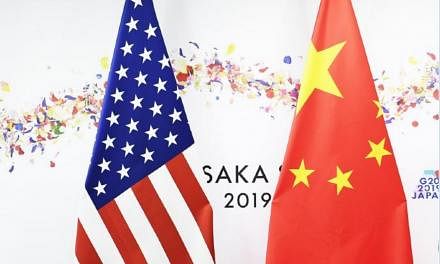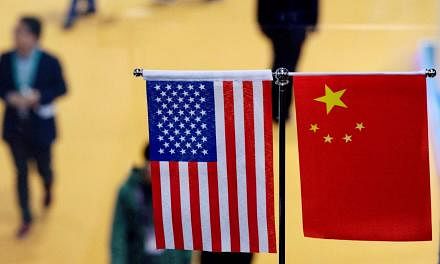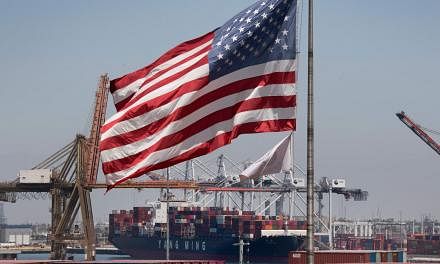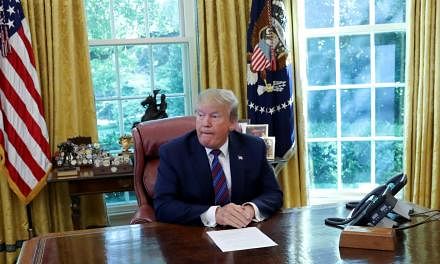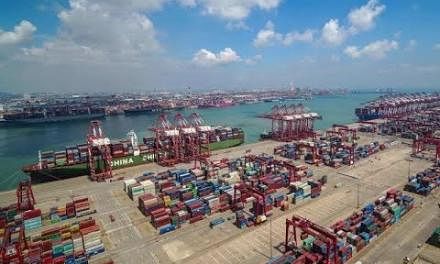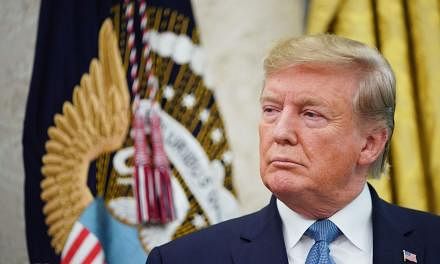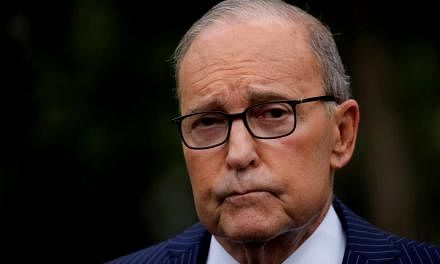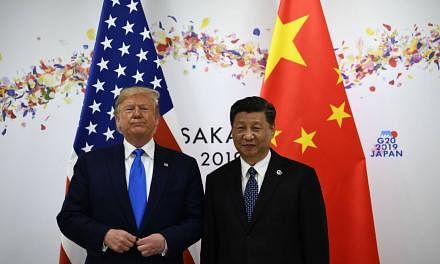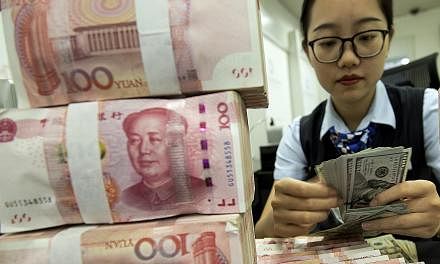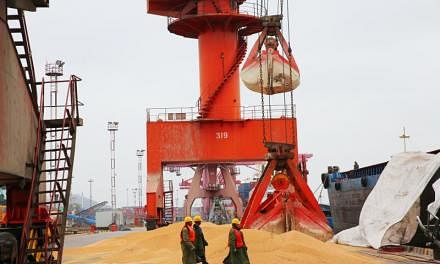BEIJING/WASHINGTON (BLOOMBERG, REUTERS, XINHUA) - The Trump administration's tariffs on another US$200 billion in Chinese goods kicked in on Monday (Sept 24), ramping up a trade war between the world's two biggest economies.
The latest round of US duties on US$200 billion (S$273 billion) of Chinese products took effect just after midnight Washington time on Monday (midday in Beijing) on a list of products ranging from frozen meat to television components.
China retaliated with tariffs on US$60 billion in US goods, a move that President Donald Trump has said would spur new duties on another US$267 billion in Chinese imports.
If the president follows through on the escalation threat, US tariffs would cover all goods the nation imported from China last year.
The conflict risks descending into a war of attrition that economists warn could undermine the global economy and upend the supply chains of multinational companies.
Shortly after the tariffs took effect, China's state council published a 36,000-character white paper on the trade spat which castigates the US for abandoning the fundamental norms of mutual respect and equal consultation that guide international relations.
"It (the US) has brazenly preached unilateralism, protectionism and economic hegemony, making false accusations against many countries and regions, particularly China, intimidating other countries through economic measures such as imposing tariffs, and attempting to impose its own interests on China through extreme pressure," the white paper said.
China last Saturday called off planned trade talks with US officials. The US State Department's sanctions against China's defence agency and its director last Thursday contributed to the decision, according to people familiar with the situation.
There is a growing consensus in Beijing that substantive talks will only be possible with the Trump administration after US mid-term elections in November, the people said.
'Meaningfully Engage'
"President Trump has an excellent relationship with President Xi and our teams have been in frequent communication since President Trump took office," Ms Lindsay Walters, deputy White House press secretary, said in an e-mailed statement.
"We remain open to continuing discussions with China, but China must meaningfully engage on the unfair trading practices."
The next 267-billion-dollar question is: Will President Donald Trump follow up with additional tariffs covering that amount of Chinese goods in the meantime, as he threatened to do if China retaliated to his US$200 billion salvo? That would effectively cover all the products that the US imports from China, again ratcheting up a conflict that could undermine the global expansion and upend the supply chains of many multinational companies.
"We don't want to, but we probably will have no choice," Mr Trump said of the tariff escalation at the Oval Office. "We're making a lot of headway with China."
'Determined to Win'
US Secretary of State Michael Pompeo said on Sunday that Mr Trump isn't starting a trade war with China, but joining one already under way.
"The trade war by China against the United States has been going on for years," Mr Pompeo said on Fox News. "To the extent one wants to call this a trade war, we are determined to win it."
Even with jitters about the escalating trade conflict, Mr Trump has a record US stock market to point to in support of his policies.
"New Economic Records being set on a daily basis - and it is not by accident!" the President said last Saturday on Twitter.
Trump's Tariff Plans
The US products that China has targeted for retaliation have changed over time, shifting from cars and agricultural commodities to industrial goods.
In the initial round, soybeans and most of China's imports of US cars were hit.
In the second round, the focus has widened and shifted more to capital goods and other imports, raising the cost for industrial companies. That's partly because many of the goods traded in large volumes with the US were already covered by the first round, so it's getting harder to find things on which to impose new tariffs.
That can be seen in the number of goods affected. In round one there were 659 US imports hit with the added 25 per cent tariff, while this time there are 5,207 individual items on which China plans to impose a 5 per cent or 10 per cent levy.
But there are still tens of billions of dollars of US goods that haven't been hit with extra import taxes yet - many in areas where China is unable to compete with western countries, such as planes, computer chips, and pharmaceuticals.
If there's continued escalation, what happens with those goods, which China has to import from somewhere, will be closely watched. Even as companies like aircraft maker Boeing bank on the growing Chinese market, tariffs, or the threat of them, could cause Chinese companies and consumers to spend less on US goods and more on substitutes from home, Japan, the European Union, or elsewhere.
Energy Impact
There are already signs of that happening in energy markets. This round of tariffs will include levies on US liquefied natural gas, and that's possibly caused one ship to change course from China to South Korea to avoid the penalty.
In the US, companies complain that the time frame between the announcement of tariffs and their implementation of the tariffs on thousands of products is too short to arrange alternatives.
And a protracted trade war will fuel inflation in the US, particularly as tariffs are added to categories such as furniture, apparel and technology, according to analysts at Bloomberg Intelligence.
Tidal Wave
"Retailers are already facing a tidal wave of tariffs. This latest tranche is a tsunami," said Mr Hun Quach, vice-president of international trade for the Retail Industry Leaders Association, a trade group based in Arlington, Virginia.
"With thousands of consumer products included, little warning, and no time to prepare, businesses are left scrambling."
Commerce Secretary Wilbur Ross told CNBC on Sept 18 that it was up to the Chinese whether or when the two sides will meet, and that the end goal was not to have tariffs in place but for China to "resolve fundamental issues".
"It's a little disappointing that the earlier tariffs haven't resulted in more constructive dialogue, but we hope these will," Mr Ross said.
Asked about the potential for US consumers to face higher prices when tariffs kick in, Mr Ross said the levies are spread over such a wide range of goods that "nobody is going to actually notice it at the end of the day".
President's Folly
In China, producers are already under stress even ahead of implementation of US tariffs, as indicated by an explosion in corporate borrowing that isn't being captured by official government statistics, according to the China Beige Book.
Manufacturing's "multi-year rally has given way to declining revenue and sharply declining profit growth," CBB International said in a report published Monday.
"Critically, manufacturing's plight is occurring before any meaningful American tariffs have been imposed. Absent a fall trade deal, this situation will likely deteriorate."
Amid the onset of economic damage for both economies, state newspaper China Daily reached into the US heartland in an advertising supplement in Iowa's largest newspaper to highlight the impact on the state's soybean farmers as "the fruit of a president's folly'.'
The four-page section in Sunday's Des Moines Register, which carried the label "paid for and prepared solely by China Daily, an official publication of the People's Republic of China," featured articles including one outlining how the trade dispute is forcing Chinese importers to turn to South America instead of the US for soybeans.

